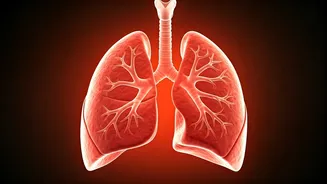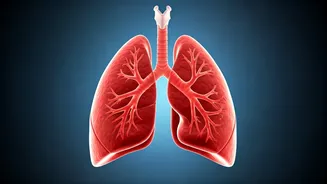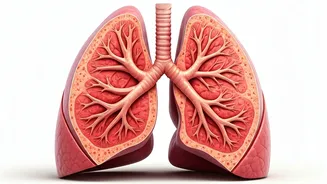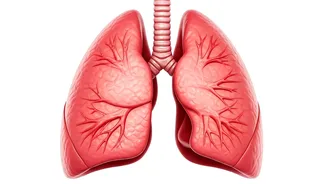Diaphragmatic Breathing
Diaphragmatic breathing, often called belly breathing, is a fundamental technique for improving lung capacity and oxygen intake. To practice this, one
should sit or lie comfortably, placing one hand on their chest and the other on their abdomen. As you inhale deeply through your nose, focus on pushing your abdomen outwards, while keeping your chest relatively still. This ensures the diaphragm, a crucial muscle for breathing, is fully engaged. Then, exhale slowly through pursed lips, allowing your abdomen to fall, and ensuring all air is expelled. Practicing this for 5-10 minutes daily can significantly improve lung function, reduce stress, and promote a sense of calm. This simple exercise helps increase oxygen levels in the blood, which supports all bodily functions, making it a cornerstone for anyone aiming for enhanced respiratory health, especially during winter.
Pursed-Lip Breathing
Pursed-lip breathing is a practical method to slow down breathing and encourage deeper, more effective breaths. This technique helps in expelling trapped air, reducing shortness of breath, and promoting a feeling of control over your breathing. The process involves inhaling slowly through your nose, ensuring the breath goes deep into your lungs, and then exhaling slowly through pursed lips, as if you're whistling. This creates a back pressure, keeping the airways open longer and improving the exchange of gases. Pursed-lip breathing is especially beneficial for people with conditions like COPD (Chronic Obstructive Pulmonary Disease), but it also benefits anyone struggling with breathlessness or looking for ways to improve lung efficiency. Regular practice can make breathing easier, making it a great exercise to manage winter’s impact on respiratory systems.
Deep Breathing Exercises
Deep breathing exercises involve consciously expanding the lungs to their full capacity. This can be done by taking slow, deep breaths, holding them for a few seconds, and then slowly exhaling. A variation includes the 4-7-8 technique, where one inhales through the nose for a count of 4, holds the breath for a count of 7, and exhales slowly through the mouth for a count of 8. This method not only enhances lung capacity but also helps lower heart rate and reduce stress, contributing to overall health. Deep breathing exercises can be performed anytime, anywhere, and they can be especially useful during periods of stress or when experiencing shortness of breath. Doing this consistently can result in better oxygenation, which is crucial for fighting winter-related respiratory issues and illnesses.
Cardiovascular Exercises
Cardiovascular exercises such as brisk walking, jogging, cycling, or swimming are essential for lung health. These activities increase heart rate, which boosts blood flow and helps deliver oxygen more efficiently throughout the body. During these exercises, the lungs work harder to supply oxygen to the muscles, leading to improved lung capacity and endurance. Aim for at least 150 minutes of moderate-intensity or 75 minutes of vigorous-intensity exercise per week. Regular cardio exercises improve the efficiency of your lungs, making it easier to breathe. In addition, these exercises have a positive impact on overall cardiovascular health, which is crucial for preventing or managing conditions like heart disease and other illnesses, making cardio an indispensable tool for winter fitness and wellness.
Yoga and Pilates
Yoga and Pilates are valuable practices for enhancing lung function and respiratory health. Many yoga poses involve deep breathing and controlled movements that expand the chest cavity and increase lung capacity. Pilates focuses on core strength and controlled breathing, which helps strengthen the respiratory muscles. Both yoga and Pilates teach mindfulness and body awareness, assisting in managing breathing and reducing stress, which positively impacts lung health. Specific poses, such as the cobra pose or the bridge pose in yoga, can open up the chest and improve ventilation. Similarly, the core-strengthening exercises in Pilates promote improved posture, contributing to better breathing mechanics. Incorporating these practices into a routine can significantly improve lung capacity and contribute to a healthier winter season.





